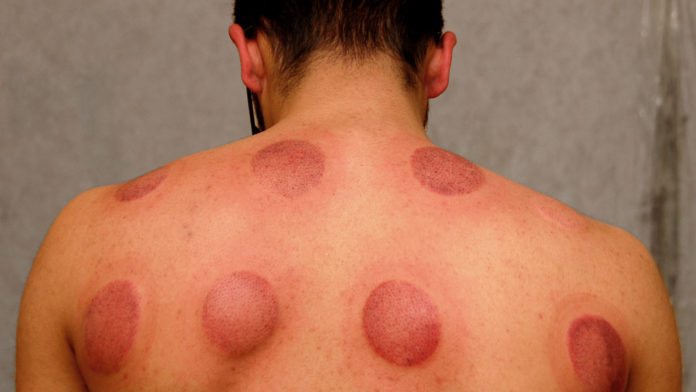The 2016 Summer Olympics are underway, and several Olympic athletes are sporting the visible marks of a controversial alternative treatment called cupping. Characterized by large circular bruising, easily visible on the backs and shoulders of star competitors like swimmer Michael Phelps and gymnast Alexander Naddour from Team USA, cupping therapy has seen a spike in interest worldwide.
Embed from Getty Images
What is cupping, and why is its effectiveness controversial?
Taken from ancient Chinese medicine, cupping uses glass or plastic cups that are either heated or pumped to create a slight vacuum. The cups are placed onto the skin of the area to be treated, pulling small sections of skin into the cups for a few minutes before being released.
Traditionally thought to increase blood flow to the area, the idea behind it is to promote muscle recovery and pain reduction. Delicate capillaries near the surface of the skin can break, causing round bruised welts.
In essence, the cups are like suction cups that leave behind the circular equivalent of a hickey.
Despite being practiced for upwards of 3,000 years, there is no hard scientific evidence that cupping has any effect over placebo: if an athlete believed in both equally, a sugar pill would be equally effective. It may even be difficult to obtain truly unbiased results, as study participants would know whether they were in the treatment group or not, and therefore could not be blinded.
In an interview with the CBC, Professor Tim Caulfield at the University of Alberta remarked, “This idea we have this life force energy running through our bodies and we can use various techniques to balance or adjust or heal that life force energy — it’s a supernatural idea, not one that has any scientific foundation.”
Why are athletes using cupping?
Olympic athletes are subjected to all manner of testing to make sure that no one has performance-enhancing drugs in their system that are against the rules. It’s easy to see why a quick and simple pain remedy that doesn’t involve any substances at all might appeal to these elite athletes.
The bruising may even help with the placebo effect, as a constant visual reminder of cupping treatment.
Embed from Getty Images
Is it possible that cupping gives Olympic athletes an edge?
Even if the only benefit of cupping is in the mind, that could be enough to make a difference. Mental strength and focus are hugely important in large sporting events, where the pressure to compete can be enough to crush an Olympic hopeful’s dreams of performing at their best.
Cupping therapy gives athletes a chance to relax and decompress right after competing, and the belief that they are doing something to help them perform.
Even with tiny effects that would normally be meaningless in everyday life, the difference between silver and gold could be fractions of a second. This could never be measured experimentally.








































